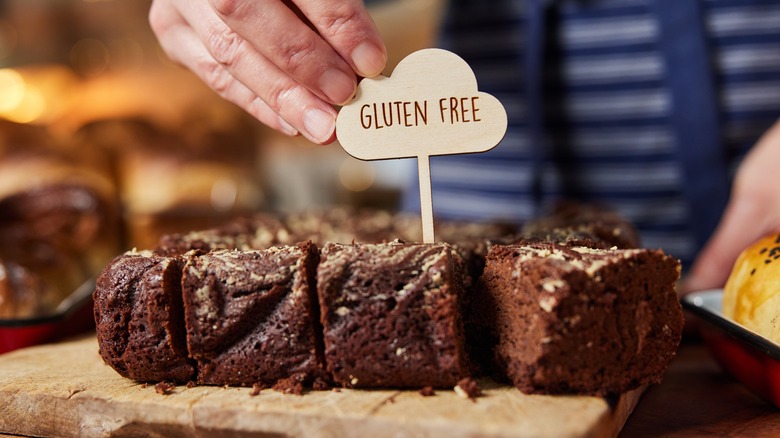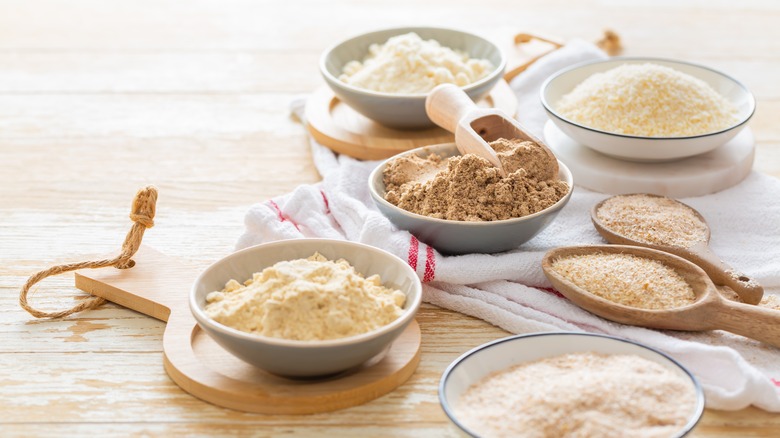When Baking With Gluten-Free Flour, You'll Need More Extract
If you're entering the world of gluten-free baking after years of experience with all-purpose flour, there can be some growing pains, but a delicious flavor and perfect texture are within reach. One of the first hurdles to overcome is the difference in taste between gluten-free flours and the wheat kind. An easy way to balance out this factor is to add extra vanilla extract — or whatever other extracts you please.
Different gluten-free flours have their own unique flavor notes. Buckwheat flour (which is gluten-free, despite its name) will impart an earthy, slightly grassy taste, while cassava flour is nutty and sorghum flour is more sweet. Depending on your recipe, these extra flavors can be distracting or unwelcome — and some flavored extract can help to cover it up. Whether you choose vanilla, almond, orange, or something else entirely, add a little more than you'd normally use. Adding extra spices like nutmeg, ginger, allspice, cinnamon, or cloves can have a similar effect.
If you try this trick and discover that you've tipped the flavor scales too much, don't worry — your dish is salvageable. A simple fix for too much vanilla extract is to add a tablespoon of citrus juice and zest to freshen up the potentially cloying batter. If too much vanilla has turned your batter bitter, adding some acid in the form of buttermilk or applesauce can help.
More tips for working with gluten-free flours
Choosing from the many types of gluten-free flour might feel overwhelming at first, but there are ways to simplify the game. One way to do so is to take a page from a pro. Ina Garten's secret to the most delicious gluten-free chocolate cake is a one-for-one gluten-free flour blend. These products are designed as an easy substitute for wheat flour. Varieties like sorghum, quinoa, or almond flour generally shouldn't be used in a 1:1 swap with APF, but one-for-one blends certainly can.
Xanthan gum is also key to the texture of your gluten-free cakes and other baked goods. This ingredient is made by fermenting sugar with a special bacteria. When the gum comes in contact with liquid, it forms a thick, viscous texture that helps bind and stabilize baked goods, making them fluffier than your run-of-the-mill gluten-free products.
Meanwhile, if you're making cookies, make sure to let gluten-free cookie dough rest before shaping and baking it. Cookies have fewer liquid ingredients than cake, which is an important difference, given that gluten-free flours take longer to absorb moisture. Adding extra liquid (including extract) can help to speed up the absorption process, but letting the dough rest for a half hour will make a world of difference.


